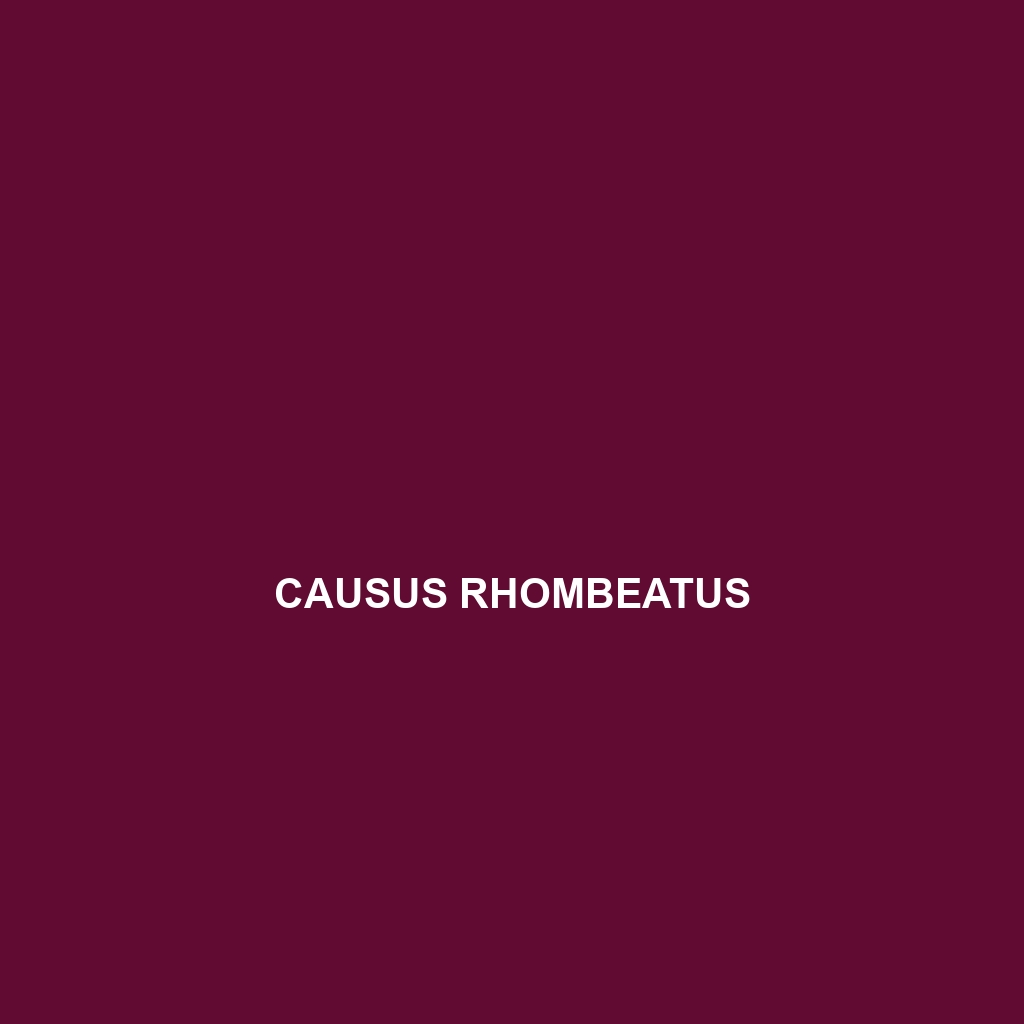Causus rhombeatus
Common Name: Causus rhombeatus
Scientific Name: Causus rhombeatus
Habitat
Causus rhombeatus, commonly known as the Rhombic Night Adder, is primarily found in the sub-Saharan regions of Africa, particularly in countries such as Namibia, Botswana, and parts of South Africa. This species typically inhabits drier areas, including bushy savannas, and rocky outcrops where it can find adequate cover and prey.
Physical Characteristics
The Rhombic Night Adder is a medium-sized snake, averaging between 60 to 90 centimeters in length. It is characterized by its distinctive rhombus-shaped markings along its back, which can vary in color from brown to grey. The ventral side is usually a lighter shade, providing excellent camouflage against the forest floor. Its head is broad and largely flattened, with a pointed snout that makes it easy to recognize.
Behavior
Causus rhombeatus is primarily a nocturnal species, becoming active after dusk to hunt and explore its surroundings. It is known for its docile nature and prefers to avoid confrontation with larger predators. When threatened, it may exhibit defensive behaviors such as coiling and hissing but typically relies on camouflage to evade detection.
Diet
The diet of Causus rhombeatus primarily consists of small mammals, lizards, and amphibians. This snake is an ambush predator, often waiting motionless for unsuspecting prey to come within striking range. Its venom is potent, enabling it to subdue larger prey effectively. Additionally, it hunts during the nighttime, aligning its feeding habits with its nocturnal activity pattern.
Reproduction
Causus rhombeatus typically breeds during the rainy season, when environmental conditions are most favorable. The female usually lays a clutch of 5 to 10 eggs, which are hidden in leaf litter or underground burrows to protect them from predators. The hatchlings emerge after approximately two months and are fully independent from birth.
Conservation Status
As of the latest assessments, Causus rhombeatus is classified as Least Concern according to the IUCN Red List. However, habitat degradation and human encroachment pose ongoing threats that could impact its future population stability. Conservation efforts are essential to maintain its habitats and ensure survival.
Interesting Facts
Causus rhombeatus is often mistaken for other similar snake species due to its coloration and patterns. Interestingly, this species has a unique way of detecting heat from warm-blooded prey, which enhances its hunting skills. Additionally, its venom is not typically fatal to humans, making it less dangerous than other venomous snakes.
Role in Ecosystem
Causus rhombeatus plays a vital role in its ecosystem as both a predator and prey species. Its presence helps regulate populations of small mammals and other reptiles, while also serving as a food source for larger predators. This ecological balance illustrates the importance of Causus rhombeatus within its natural habitat.
